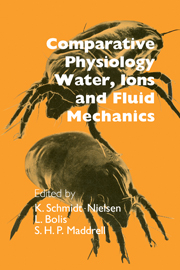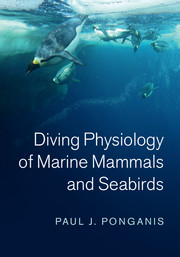Comparative Physiology: Primitive Mammals
Comparative Physiology: Primitive Mammals attempts to dispel the widely held notion that 'primitive' animals are less advanced or less complex than the 'non-primitive'. The term 'primitive', or more accurately 'conservative', refers to the fact that these animals have retained many of the characteristics of their evolutionary ancestors. Because they have been able to adapt to a variety of environmental conditions, these so-called primitive animals should be considered highly successful evolutionary solutions. The papers contained in this volume are the result of the Fourth International Conference on Comparative Physiology held at Crans-sur-Sierre in 1978. The conference, which was sponsored by the Interunion Commission on Comparative Physiology representing the International Unions of Biological Sciences, Physiological Sciences, and Pure and Applied Biophysics, brought together scientists from various fields to discuss the widely scattered information on primitive mammals from the perspective of comparative physiology.
Product details
June 2009Paperback
9780521106306
356 pages
229 × 152 × 20 mm
0.53kg
Available
Table of Contents
- 1. Biology of the earliest mammals A. W. Crompton
- 2. Biological strategies of living conservative mammals John F. Eisenberg
- 3. Milk and mammalian evolution Olav T. Oftedal
- 4. The reptilian digestive system: general characteristics Charles L. Guard
- 5. The gastrointestinal tract of mammals: major variations C. E. Stevens
- 6. Digestive tract and digestive function in monotremes and nonmacropod marsupials C. J. F. Harrop and I. D. Hume
- 7. Form and function of the macropod marsupial digestive tract I. D. Hume and D. W. Dellow
- 8. The digestive tract: inmsectivore, prosimian, and advanced primate Edgar T. Clemens
- 9. Evolution of mammalian homeothermy: a two-step process? C. Richard Taylor
- 10. Have some mammals remained primitive thermoregulators? Or is all thermoregulation based on equally primitive brain functions? John Bligh
- 11. What is a primitive thermoregulatory system H. Craig Heller
- 12. The evolution of energy metabolism in mammals A. J. Hulbert
- 13. Metabolic capabilities of monotremes and the evolution of homeothermy Terence J. Dawson and T. R. Grant
- 14. Energy metabolism in hedgehogs: primitive strategies? Amiram Shkolnik
- 15. Relations of metabolic rate and body temperature Piotr Poczopko
- 16. The smallest insectivores: coping with scarcities of energy and water Stan Lee Lindstedt
- 17. Metabolic levels and biological strategies in shrews Peter Vogel
- 18. The respiratory system of the smallest mammal Eward R. Weibel, Helgard Claassen, Peter Gehr, Senada Sehovic and Peter H. Burri
- 19. Energetics of locomotion: primitive and advanced mammals C. Richard Taylor
- 20. Physiological responses to locomotion in marsupials R. V. Baudinette
- 21. Mechanics of locomotion in primitive and advanced mammals Norman C. Heglund
- 22. Elasticity in the locomotion of mammals R. McN. Alexander
- 23. Elastic storage: role of tendons and muscles Giovanni A. Cavagna, G. Citterio and P. Jacini
- 24. Properties and distributions of the fiber types in the locomotory muscles of mammals Robert B. Armstrong
- 25. Endocrines: problems of phylogeny and evolution P. J. Bentley
- 26. Pituitary-ovarian interactions in marsupials C. H. Tyndale-Biscoe and Susan M. Evans
- 27. Placental function and embryonic development in marsupials Marilyn B. Renfree
- 28. Adrenocorticosteroids in prototherian, metatherian and eutherian mammals Magda Weiss
- 29. The renin-angiotensin system in marsupials J. R. Blair-West and Angela Gibson
- 30. Physiology of the adrenal
- cortex in monotremes C. Sernia
- 31. Physiology of the adrenal cortext in marsupials I. R. McDonald
- Index.






